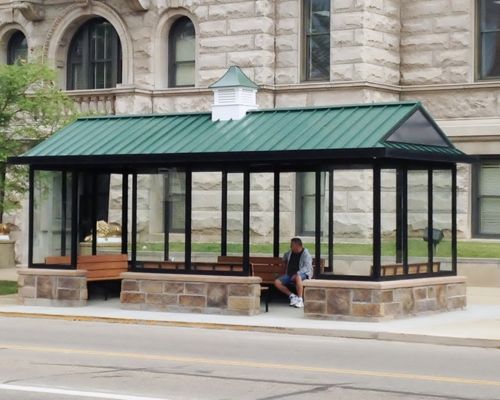
Small changes in urban infrastructure can have a significant impact on the quest for a more sustainable and environmentally friendly future. One such change is transforming bus shelters in an effort to make them more sustainable while improving the overall urban landscape.
These elements of city landscapes are prime candidates for embodying the principles of sustainability, not just in their function but through design and technological integration as well. By making bus shelters more sustainable, cities can promote green living and enhance the aesthetics and functionality of public spaces.
Incorporating Renewable Energy
One of the main steps toward sustainable bus shelters involves harnessing renewable energy sources, such as solar power. Installing solar panels on the roofs of bus shelters can generate enough energy to power the shelter’s lighting and digital display systems. This use of clean energy reduces reliance on the power grid, which non-renewable sources often supply, reducing the carbon footprint of public transport infrastructure.
Green Roofing Systems
Integrating green roofs into bus shelter designs not only enhances their aesthetic appeal but also contributes significantly to local biodiversity and air quality improvement. These living roofs can help regulate the temperature inside the shelter, making it more comfortable for users while reducing the urban heat island effect. They absorb rainwater, reducing runoff and straining urban drainage systems.
Utilizing Prefabricated Enclosures
Quality prefabricated enclosures present an eco-friendly solution for constructing bus shelters. These structures develop in a controlled environment, reducing waste and energy consumption during construction. They can use sustainable materials, such as recycled plastic or sustainably sourced wood. By incorporating these enclosures, the process becomes more efficient and less wasteful and results in durable, low-maintenance shelters that stand the test of time and the elements.
Smart Technology for Efficiency
The integration of smart technology into bus shelters can significantly enhance their sustainability. Features such as LED lighting, which turns on only when sensors detect motion, can dramatically reduce energy consumption. Renewable energy harvested by the shelter can power digital timetables or real-time updates on bus schedules, ensuring these conveniences have a minimal environmental footprint.
Promoting Recycling and Environmental Awareness
Turning bus shelters into hubs for recycling and environmental awareness can have a profound impact. Installing recycling bins within shelters encourages passengers to dispose of waste responsibly. Informational displays can educate the public on environmental issues and the importance of sustainability, fostering a culture of responsibility and care toward the environment and the community.
Making bus shelters more sustainable is a tangible step toward greener urban living. Renewable energy, prefabricated enclosures, green roofing, smart technology, and awareness can help these everyday structures contribute significantly to the well-being of cities and the planet. By reimagining and reinventing bus shelters, we not only enhance the user experience but also create a lasting positive impact on the environment.
